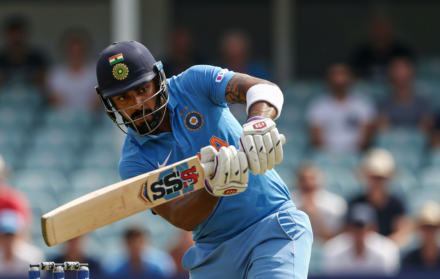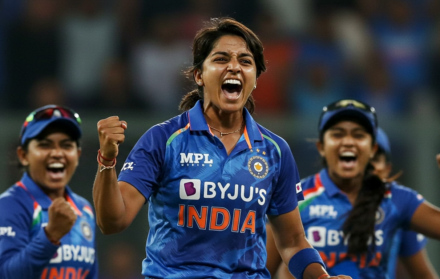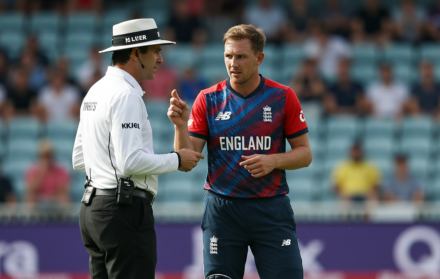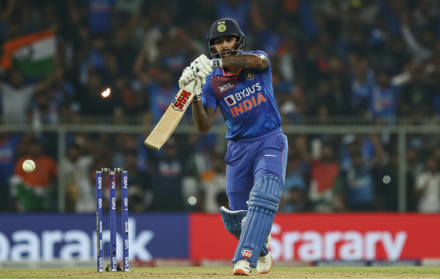
How To Handle Pressure During Crucial Bowling Overs In Cricket
Learning how to handle pressure during crucial bowling overs in cricket is a skill that separates great bowlers from the rest. The ability to perform under immense pressure can make a significant impact on the outcome of a cricket match.
Understanding the importance of handling pressure is crucial for every bowler. It is important to recognize the impact that pressure can have on performance, and the significance of crucial bowling overs in a match.
Developing effective strategies for handling pressure is essential. This includes maintaining a clear and focused mindset, utilizing mental preparation techniques, and managing emotions and nervousness.
Adapting to different match formats, understanding team strategy, and assessing match conditions are crucial in handling pressure situations. Learning from pressure situations and making improvements through post-match analysis and practice is also vital for a bowler’s growth.
By incorporating these strategies and continuously seeking self-improvement, bowlers can excel under pressure in crucial bowling overs.
The Importance of Handling Pressure in Crucial Bowling Overs

In the gripping world of cricket, the ability to handle pressure during crucial bowling overs can make or break a match. Join me as we dive into the importance of staying cool under pressure in these intense moments.
We’ll explore how pressure can greatly impact performance and why these crucial overs hold so much weight in a cricket game. So, gear up and get ready to uncover the secrets behind mastering the art of handling pressure in cricket’s most nail-biting situations!
Understanding the Impact of Pressure on Performance
Understanding the impact of pressure on performance is crucial for bowlers looking to excel in high-pressure situations. The significance of crucial overs in a cricket match cannot be underestimated as they can have a significant impact on the overall performance.
It affects decision-making, execution of skills, and overall confidence. Consequently, developing strategies for handling pressure becomes imperative. Maintaining a clear and focused mindset, along with effective bowling techniques, plays a vital role in managing pressure situations. Mental preparation techniques and the ability to manage emotions and nervousness also contribute to handling pressure successfully.
Additionally, understanding different match formats, team strategies, and personal role as a bowler, as well as assessing the playing conditions, are essential factors in dealing with pressure situations.
To improve further, it is crucial for bowlers to learn from pressure situations by conducting post-match analysis, seeking guidance from coaches, and practicing under pressure.
By incorporating these key insights into their approach, bowlers can enhance their performance under pressure.
Recognizing the Significance of Crucial Bowling Overs in a Cricket Match
Recognizing the significance of crucial bowling overs in a cricket match is fundamental for bowlers to perform at their best. These overs, which commonly occur towards the end of the match when the pressure is at its peak and each delivery carries immense weight, can ultimately determine the outcome of the game and greatly impact a bowler’s performance.
To succeed under these circumstances, bowlers must maintain a clear and focused mindset, adapt to varying match formats and conditions, and effectively manage their emotions and nervousness.
Understanding and acknowledging the importance of these pivotal overs allows bowlers to devise strategies and acquire techniques that empower them to excel under immense pressure.
In a recent cricket match, the significance of crucial bowling overs was made abundantly clear when a bowler, confronted with immense pressure, successfully claimed two vital wickets in the final over, ultimately leading their team to victory.
Their ability to rise to the occasion, handle the pressure with composure, and deliver precise deliveries vividly showcased the significance of recognizing and mastering these critical moments within a cricket match.
This remarkable feat served as a potent reminder to other bowlers about the tremendous impact these overs can have on the game’s outcome and reinforced the imperative of preparing mentally and physically to thrive in such high-pressure situations.
Strategies for Handling Pressure During Crucial Bowling Overs

Unleash your bowling prowess with strategies for handling pressure during crucial overs! From maintaining a clear and focused mindset to developing effective bowling techniques, we’ve got you covered.
Discover the power of mental preparation techniques and gain insights into managing emotions and nervousness on the field. Get ready to conquer those high-pressure situations and deliver your best performance yet!
Maintaining a Clear and Focused Mindset
Maintaining a clear and focused mindset is crucial for handling pressure during crucial bowling overs in cricket. Here are key steps to achieve this:
- Visualize success: Imagine yourself executing perfect deliveries and achieving desired outcomes.
- Control breathing: Deep, controlled breaths help reduce anxiety and improve focus.
- Simplify your focus: Concentrate on one delivery at a time, blocking out distractions.
- Positive self-talk: Use affirmations and encouraging statements to boost confidence and maintain focus.
- Stay present: Avoid dwelling on previous deliveries or anticipating future ones, staying in the moment.
- Embrace pressure as an opportunity: View pressure situations as a chance to excel and showcase your skills.
To effectively handle pressure during crucial bowling overs in cricket, it is essential to maintain a clear and focused mindset. Follow these key steps to achieve this mental state:
- Visualize success: Take the time to imagine yourself executing perfect deliveries and achieving the desired outcomes.
- Control breathing: Engage in deep, controlled breaths to alleviate anxiety and enhance your ability to concentrate.
- Simplify your focus: Concentrate on one delivery at a time, blocking out any distractions that may arise.
- Positive self-talk: Utilize affirmations and encouraging statements to boost your confidence and sustain your focus.
- Stay present: Avoid dwelling on previous deliveries or anticipating future ones, and instead, remain fully present in the current moment.
- Embrace pressure as an opportunity: Shift your mindset and view pressure situations as valuable chances to demonstrate your skills and excel.
Developing Effective Bowling Techniques
- To develop effective bowling techniques in cricket, players can follow these steps:
- Focus on developing effective bowling techniques: Hold the ball with a firm grip and practice different release techniques to achieve accuracy and control.
- Master the run-up: Maintain a consistent and balanced run-up to generate enough momentum and power while maintaining control.
- Work on your body alignment: Ensure proper body alignment throughout the delivery stride to avoid injuries and improve accuracy.
- Practice variations: Develop a repertoire of bowling variations like spin, swing, and pace to keep the batsmen guessing.
- Improve accuracy: Focus on consistently hitting the right areas on the pitch and aiming for the stumps.
Pro-tip: Regular practice and seeking guidance from experienced coaches can significantly enhance your bowling techniques and overall performance on the field.
Utilizing Mental Preparation Techniques
Utilizing mental preparation techniques is essential for managing pressure during critical bowling overs in cricket. In the 2019 Cricket World Cup, England’s Jofra Archer showcased the effectiveness of these techniques.
With the match tied and the Super Over approaching, Archer demonstrated composure and skillfully delivered exceptional deliveries. His mental resilience and thoughtful preparation were pivotal in helping England secure their first-ever World Cup title.
Managing Emotions and Nervousness
Managing emotions and nervousness during crucial bowling overs in cricket is crucial for maintaining composure and delivering an effective performance. To manage emotions and nervousness, there are several helpful steps:
- Practice deep breathing: Make sure to incorporate deep breathing exercises into your routine as they can help calm nerves and regulate emotions.
- Visualization: Boost your confidence and reduce anxiety by visualizing successful outcomes and positive scenarios.
- Mindfulness: Stay focused on the present moment and concentrate on each delivery instead of worrying about future outcomes.
- Use positive self-talk: Counter negative thoughts or doubts by using positive affirmations to boost your self-confidence.
- Stick to a routine: To increase confidence and reduce anxiety, establish a consistent pre-bowl routine and prioritize preparation.
Handling Pressure Situations Based on the Match Context

When it comes to handling pressure situations in cricket, understanding the match context is key. In this section, we’ll dive into different aspects that help players adapt to various match formats, comprehend their team’s strategy, and determine their role as a bowler.
We’ll also explore the significance of assessing the conditions and adjusting bowling tactics accordingly. So, let’s explore the game within the game and discover effective ways to thrive under pressure on the crucial bowling overs.
Adapting to Different Match Formats
Adapting to different match formats is crucial in cricket as each format requires different strategies and skills. Understanding the unique demands of each format and adjusting your game accordingly is essential to effectively adapt to different match formats in cricket.
By adapting to different match formats, you can successfully navigate the longer duration and focus on endurance and patience required in Test Matches.
In One Day Internationals(ODIs), the key is finding the right balance between aggression and stability, while adapting to the faster pace.
In Twenty20(T20) matches, quick decision-making is crucial, along with aggressive batting and bowling.
Understanding the Team Strategy and Role as a Bowler
Understanding the team strategy and role as a bowler is essential for handling pressure during crucial bowling overs in cricket. Bowlers must have a clear understanding of the game plan and their specific responsibilities within the team.
This includes comprehending the batsmen’s weaknesses, adjusting the bowling line and length according to the pitch conditions, and implementing various bowling tactics based on the situation.
By aligning with the team strategy and effectively fulfilling their role, bowlers can significantly contribute to their team’s success and adeptly handle pressure situations.
Assessing the Conditions and Adjusting Bowling Tactics
It’s essential to effectively handle pressure during crucial bowling overs in cricket. Here are some steps to consider:
- Observe the pitch conditions and take note of factors like the bounce, turn, and pace.
- Assess the weather conditions, as it can impact the movement of the ball.
- Analyze the playing field, considering factors like boundary size and wind direction.
- Observe the behavior of previous deliveries and batsmen’s reactions to determine the best line and length to bowl.
- Adjust your field positions based on the conditions and the batsmen’s strengths and weaknesses.
- Vary your pace, line, and length based on the conditions to keep the batsmen guessing.
- Make real-time adjustments based on how the batsmen are responding to your deliveries.
- Communicate with your captain and fellow bowlers to ensure a coordinated strategy.
By assessing the conditions and adjusting bowling tactics, bowlers can enhance their effectiveness and handle pressure in crucial overs more effectively.
Learning from Pressure Situations and Making Improvements

In the quest to conquer the pressure situations during crucial bowling overs in cricket, it’s all about learning, improving, and excelling. Let’s dive into the art of handling pressure, starting with the power of post-match analysis and self-evaluation.
We’ll then explore the invaluable guidance one can seek from coaches and mentors. We’ll uncover the secrets of practicing under pressure and creating real match scenarios in order to emerge victorious in the face of intense competition.
Post-Match Analysis and Self-Evaluation
After a cricket match, conducting a thorough post-match analysis and self-evaluation is crucial for a bowler’s development. Here are some steps to follow:
- Perform Analyze your performance, focusing on areas like line and length, variations, and accuracy.
- Identify Strengths and Weaknesses: Identify areas where you excelled and where you need improvement.
- Set Goals: Set specific goals for your next match based on your post-match analysis and self-evaluation. Work on improving weak areas and further enhancing your strengths.
- Seek Feedback: Discuss your performance with coaches, mentors, or teammates to gain different perspectives and insights.
Pro-Tip: Maintain a positive mindset during the post-match analysis and self-evaluation process. Celebrate your successes, learn from your mistakes, and embrace the opportunity for growth.
Seeking Guidance from Coaches and Mentors
When facing pressure situations in crucial bowling overs in cricket, seeking guidance from coaches and mentors can provide valuable support and insight. Coaches and mentors, who have expertise in the game, can offer advice on various aspects such as technique, strategy, and mental preparation.
Their experience and knowledge can help bowlers develop their skills, handle pressure effectively, and make improvements. Engaging in discussions with coaches and mentors, attending coaching sessions, and receiving feedback can enhance a bowler’s understanding and ability to perform under pressure.
Utilizing this guidance from coaches and mentors can ultimately contribute to a player’s growth and success.
Practicing Under Pressure and Simulating Real Match Scenarios
- To effectively handle pressure during crucial bowling overs in cricket, it is crucial for players to practice under pressure and simulate real match scenarios.
- One way to achieve this is by regularly participating in practice matches or simulating high-pressure situations during training sessions.
- It is important to set specific targets or objectives for each practice session to replicate the pressure of a real match.
- Players should practice executing different bowling techniques and strategies under simulated pressure, with a focus on maintaining accuracy and control.
- To create game-like scenarios, teammates or coaches can be involved to provide realistic pressure situations and feedback.
- Visualization techniques can also be used to mentally prepare for high-pressure bowling situations and rehearse the desired outcomes.
By consistently practicing under pressure and simulating real match scenarios, players can develop the skills and mental fortitude necessary to handle pressure effectively during crucial bowling overs in cricket.





